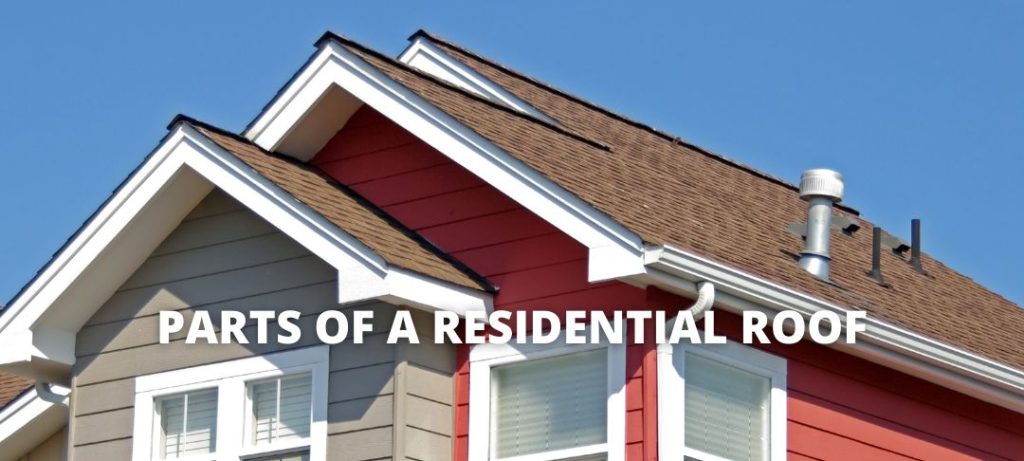It is convenient to assume that a roof is a roof. However, the fact is that there are different types of roofing, depending on the type of the building and the material used. As the name suggests, residential roofing encompasses diverse types of roofs placed atop residential buildings. It is a type of roof with only a clear obstacle for the chimney and is otherwise straightforward to create, install, and maintain. Likewise, residential roofs are also easy to install. However, it is imperative to consult professionals promptly to have any residential roof repaired or even replaced if necessary. Now that we have touched upon the basics of residential roofing let us get into the details of its structure.
Nine parts of a residential roof
As a homeowner, you must be aware of the nitty-gritty of your house’s roof. Of course, it goes without saying that the roof is the unrivalled crown of any residence, and thereby it needs care and attention. Well, the first step to caring for a roof is knowing its different parts.
1. Rafters
Structural roof framing that extends from the eaves (or edges) of an existing roof down to the ridge (or peak). It is worth noting that the inside of a house, the rafters provide the foundation for a roof’s support.
2. Truss
It is a structural framework composed of two, three, or more pieces of a triangle, which support the overall roof decking and structure.
3. Ridge Board
It is a horizontal timber or metal resting at the peak of the roof. The rafters and trusses are interlinked to the ridge board to form a cohesive network.
4. Decking
Also known as sheathing, decking is the structural foundation over which all roofing components or parts are installed and secured to. Decking is typically composed of plywood or wood plank.
5. Eave
It is the lower horizontal edge of a sloped roof.
6. Fascia
It is the board nailed to the end of the trusses or rafters at the edge of a roof. Fascia is constituted of wood or composite boards.
7. Rake
It is the inclined side of a gable end.
8. Skylight
It is the window installed on a roof to let daylight come in.
9. Gutter
It is a duct intended for seamless water discharge from the building.
Now that we know about the top nine parts of a residential roof let us understand the roofing system in further detail.
Components of a roofing system
A well-crafted roofing system acts as a knight in shining armour and protects your home’s roof from all forces of depreciation for years on end. Some of the components include –
- Leak Barrier – “Leak barrier” refers to a self-applied waterproof underlayment that is generally laid on top of decks and other vulnerable places to prevent roof leaks caused by wind-driven showers and ice dams.
- Flat Underlayment – It is a water-resistant layer stacked above the solid decking board and then completely covered by shingles or other residential roofing materials. When it comes to a flat underlayment, asphalt-soaked felt or synthetic material is the most common material. For additional protection, the flat underlayment acts as a secondary layer of water-shedding protection between shingles and the roof deck.
- Shingles – They are a common roofing material made of asphalt, fibreglass, mat and ceramic-coated granules. Singles serve as the primary roof covering and are installed in layers to protect the structure and ensure adept water shedding.
- Starter Strip Shingles – For increased wind resistance, they are the first line of roof shingles to be laid along the roof’s eaves and rakes.
- Ventilation – It is a system of intake and exhaust vents that permit the balanced flow of air through the attic space to keep the house at a comfortable temperature.
- Hip and Ridge Cap Shingles – They are shingles especially designed to be installed over the areas when two roof planes meet one another.
Tips while looking for a new residential roof
In case you are looking for a roof repair or renewal, or trying to select a new roofing system for your house, then it is essential to consider certain factors. The first element is, undoubtedly, the cost. Typically, asphalt shingles are the most economical choices when it comes to residential roofing. However, in case your budget permits, you can also opt for other materials like metal, tile, slate, and so forth. The second material to consider is the warranty term. It is essential that you do not get smitten by the appeal of a roof so much that you forget to consider practical details such as the warranty period. Asphalt shingles often come with a 20-year to lifetime manufacturer’s warranty. Lastly, the third factor to consider while choosing a new roof for your house is the overall maintenance and repair estimate. The residential roof you choose should be low maintenance, and you should have your roof inspected by professionals at least twice a year or after significant weather phenomena for damage and other loopholes.
Concluding Thoughts
Whether you are a new homeowner or are a veteran in the field, the step to being attentive towards your residence is to inspect the roof regularly. So, if you know all the parts of the roof and its various protective mechanisms, it becomes easier to discover damages and look for loopholes. However, if your roof is 15 years or older, the standard practice is to call for replacement. However, the timeframe is subjective and depends upon several factors, such as the quality of the roof, the presence of unprecedented damages, etc. Having a trustworthy roof repair professional handy is also essential as they can guide you with tips and tricks to increase the longevity of your residential roofing and keep damages at bay.


